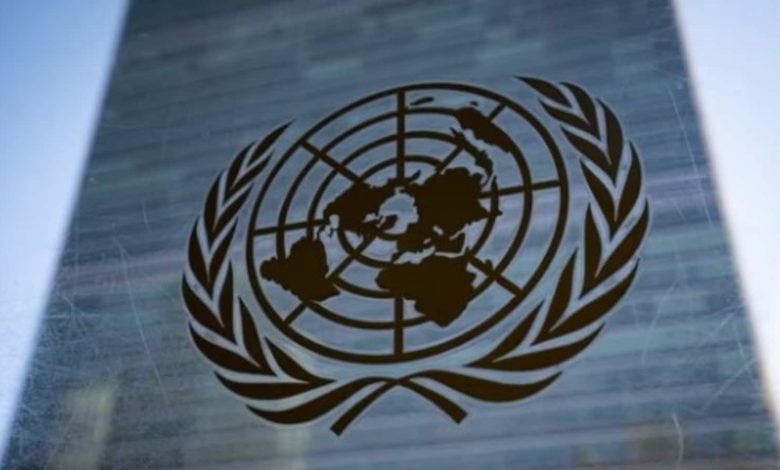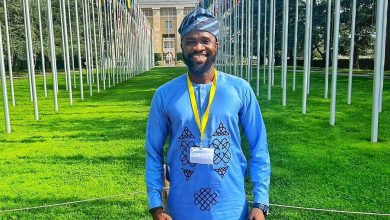The UN adopted the first agreement in the world to protect the oceans World news

The first international agreement to protect the high seas was adopted on Monday at the United Nations, creating a landmark environmental agreement designed to protect remote ecosystems vital to humanity.
Secretary-General Antonio Guterres hailed as a “historic achievement” the agreement that will establish a legal framework to expand the areas of environmental protections to international waters, which make up more than 60 percent of the world’s oceans.
“The ocean is the lifeblood of our world and today it has breathed new life and hopes to give the ocean a fighting chance,” he told delegates.
READ | Why does the world need an agreement to protect its oceans?
Following more than 15 years of talks, including four years of formal negotiations, UN member states finally agreed on the text for an agreement in March after a flurry of late, race-related talks.
The word, since it was frozen, UN lawyers and translators have gathered to make sure it fits in the six official languages of the body.
“Countries must now ratify it as quickly as possible to bring it into force so that we can protect our oceans, build our resilience to climate change and protect the lives and livelihoods of billions of people,” said Rebecca Hubbard of the High Seas Alliance.
Scientists are increasingly realizing the importance of the ocean, which produces many of the greenhouse gases we breathe, mitigates climate change by sequestering CO2, and provides biodiversity hotspots. living, often at an invisible level.
But with much of the world’s seas lying outside the exclusive economic zones of individual countries, and therefore the jurisdiction of any one state, providing protection for the so-called “high seas” requires international cooperation.
The result is that they have been neglected for a long time in many environmental conflicts, because the focus has been on coastal areas and few exemplary species.
A key element in the agreement will be the ability to create protected marine areas in international waters.
Currently, only about one percent of the high seas are protected by any type of conservation measures.
The agreement is seen as important to countries protecting 30 percent of the world’s oceans and lands by 2030, as agreed by world governments in a separate historic agreement reached in Montreal in December.
With it, “We are giving ourselves the means to achieve” the 30 percent goal, said the Secretary of France for the Ocean, Herve Berville.
READ | Plastic pollution in water could nearly double by 2040 if left unchecked: Study
– ‘Wonderful materials’ –
He called for a “sprint” towards ratification so that the treaty enters into force by the next World Ocean Conference in Nice, France in June 2025.
The agreement, officially known as the agreement on “Onidiversity Beyond National Jurisdiction” or BBNJ, also introduces requirements to carry out environmental impact studies for projects to be carried out in international waters.
Such activities, while not listed in the text, would include anything from fishing and shipping to more controversial pursuits, such as deep-water mining or even technological systems aimed at fighting global warming.
The agreement also establishes the principles for sharing the benefits of “marine genetic resources” (MGR) obtained through scientific research in international waters – a sticking point that nearly killed last-minute negotiations in March .
Developing countries, which often do not have the money to finance such trips, fight for profit-sharing rights, hoping not to be left behind by what many see as a huge future in MGR’s business, even by the the pharmaceutical and cosmetics industry searching for “miracle molecules.”
The agreement will open for signatures on September 20, when dozens of heads of state will be in New York for the UN General Assembly.
It remains to be seen how many countries will decide to come on board.
Russia itself withdrew from the agreement as soon as it was accepted, declaring some elements of the text “definitely unacceptable”.
The NGOs believe that the threshold of 60 credentials needed to enter the power should be within reach since the High Coordination Committee for BBNJ – which pushed for the agreement – counts some 50 countries or as a member, including those of the European Union. , as well as Chile, Mexico, India and Japan.
But 60 is far from the universal adoption – the UN has 193 member states – that ocean defenders are pushing for.
“Let’s take this effort forward. Let’s continue to work to protect our oceans, our planet, and all the people who live on it,” said UN General Assembly President Csaba Korosi.







